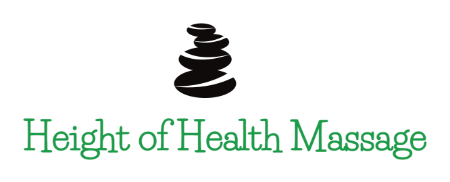Learn more on how body mindfulness can optimize your massage therapy session.

Mindfulness & Massage
Mindfulness
There’s a good chance you’ve heard the term "mindfulness" recently. There are headlines and niche books advertising mindful eating, mindful walking, mindful listening, mindful breathing, and so on. Often associated with meditation, mindfulness can best be defined as the non-judgemental conscious maintenance of in-the-moment awareness of oneself. This includes conscious awareness of our inner thoughts, the way we breathe, eat, interact with others, and hold our bodies. There is an abundance of articles, apps, books, and even coloring books that offer guidance on how to implement a mindfulness practice in your daily life. Despite common portrayals in popular media, mindfulness is not a practice that requires you quit your job, give up all of your possessions and escape to an ashram in the Himalayan mountains. It’s just you, your mind, and your body. You can practice mindfulness anywhere you go, in anything you do.
With origins in Buddhist and Eastern traditions, secular research of mindfulness has been taking place in the United States since the early 1980s. Mindfulness-based stress reduction (MBSR) practices have been shown to have increased positive affect (decreased anxiety, depression), reduced rumination, increased focus, changes in pain perception, and so much more. These benefits are associated with an increase in emotion regulation, positive mood, cognitive control, and general acceptance of thoughts, feelings, and experiences (Zeidan & Vago, 2016). There are many different types of mindfulness exercises and some focus specifically on body and sensation while others hone in on emotions or movement.
What does all of this have to do with massage therapy?
With the high demand and fast pace of American life, many of us move through our days busy and determined to accomplish all that we can in a short amount of time. This pushes us to default to “autopilot” mode in order to get most of our tasks done. But, when we adopt this mechanical mode we often forget to breathe, our muscles tense up, and our shoulders will raise to our ears in a constant state of contraction. By the end of the day, many of us are rubbing our necks and feeling stiff.
As a massage therapist in Fort Collins, one thing I notice frequently is that many clients I see lack an awareness for how they’re living in their body. I cannot tell you how often people tell me, “I don’t know what I did to make my [insert body part here] feel this way.” It truly is fascinating that we spend all of our time in our bodies, but often are so unaware of how we are actually existing in them.
One way to combat unnecessary and self-inflicted tension is to find a moment, whether it be one minute or twenty, and sit quietly taking slow, focused breaths. Scan your body, and check in with yourself - where are you holding tension? A body-scan exercise begins with sitting (or standing) still and taking a few deep breaths (Here is a step-by-step guided ‘body-scan’ exercise from UC-Berkeley). From there you begin placing attention up and or down your body as you continue to breathe. This can mean identifying body parts or recognizing sensations - like the way your clothes feel on your skin or how the chair feels under you. It can also mean scanning yourself for unnecessary tension. Is your brow furrowed? Are you protracting your head forward or down (lookin’ at you social media addicts!)? Are your shoulders unnecessarily too high?
Recognizing where you carry tension can allow you to make changes in how you hold your body well throughout your day. It can also provide insight about your daily body mechanics such as how you walk your dog, hold your child or purse/bag/backpack, or how you sit at your desk and work at your computer. Sharing this type of information with your massage therapist can help them determine which therapeutic techniques to use, and which parts of your body they should focus on. The more information you give your massage therapist about your body and it’s habits - the better they can give you the massage you need!
